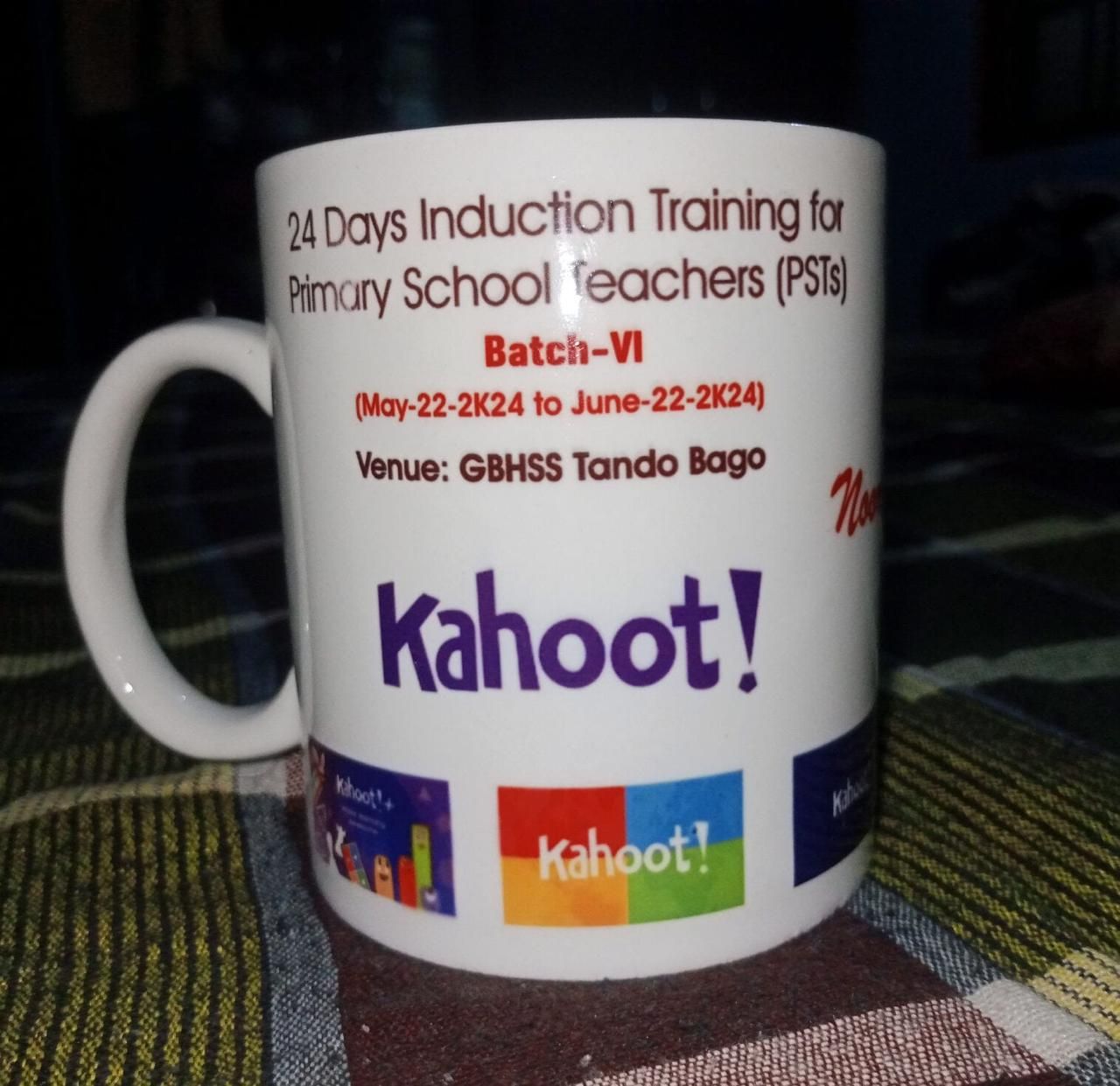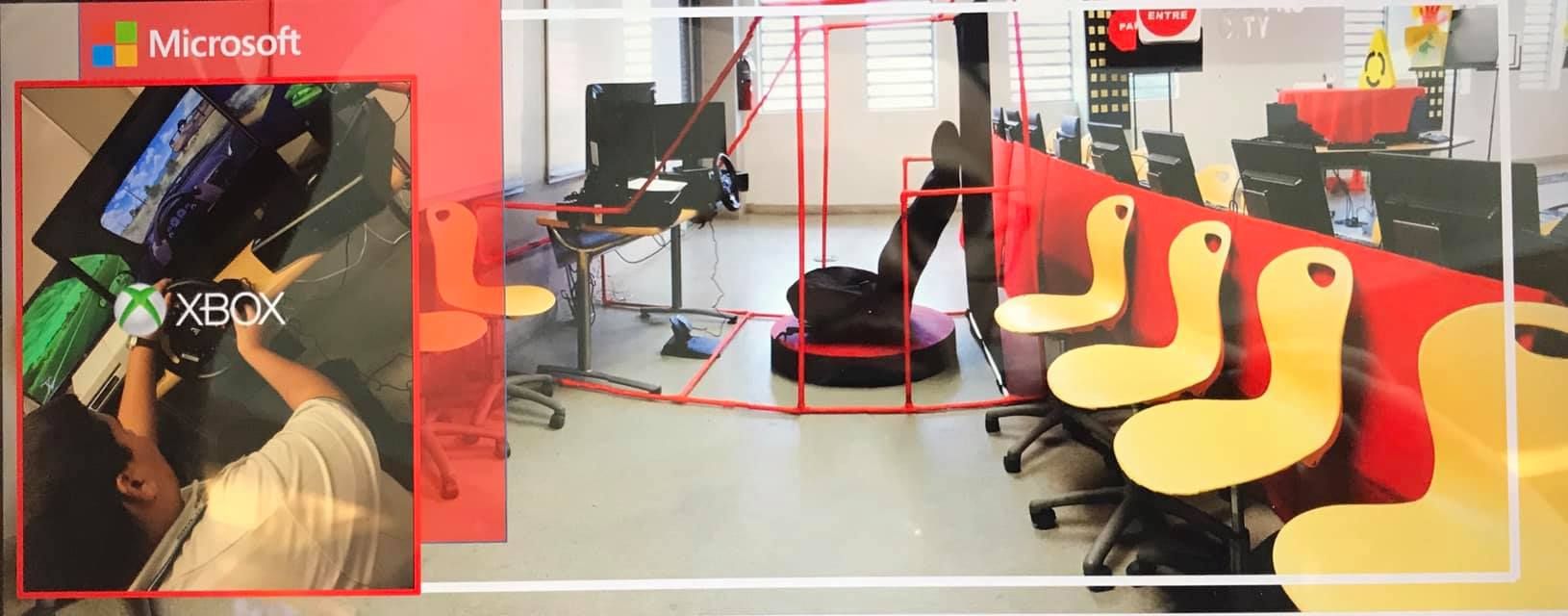@Antonia Kahoot is really invaluable resource! We also practised giving the students the task of creating their own quizzes in Kahoot, and this always was a hit, especially when the quizzes were to be done later by the classmates. Game + choice + autonomy boosts students' motivation.
-
Ideas for you_Gamifying classrooms to enhance learners engagement
-
I prefet Microsoft tool like:
to gamify classrooms using Microsoft tools, you could start by having students compete in PowerPoint Olympics, where they create dynamic presentations under a time limit while earning points for creativity and accuracy. Another idea could be turning Excel into a virtual stock market game, where students invest in hypothetical stocks and track their progress over time. For a more interactive approach, you could use Minecraft: Education Edition to recreate historical events or literary settings, allowing students to explore and complete quests within the game. Additionally, you could utilize Microsoft Forms to create quizzes or surveys with leaderboards, encouraging friendly competition among students. These gamification strategies not only enhance engagement but also provide valuable opportunities for learning and collaboration.Now, for the mal answer: Why bother with gamification when you can simply lecture at students for hours on end? Microsoft tools are great for creating elaborate spreadsheets documenting every minute of the day spent not gamifying the classroom. Instead of PowerPoint Olympics, how about PowerPoint Marathons where students have to endure hours of slide after slide until they collapse from boredom? And forget about Minecraft; let's use Word to create a virtual world where the only activity is writing essays on the importance of not having fun in school. Microsoft Forms? More like Microsoft Boredoms, where students fill out endless surveys about how much they wish they were playing actual games instead of these sad attempts at gamification. In conclusion, who needs engagement when you have Microsoft Office?
"Empowering students through engaging education, fostering environmental consciousness, and advancing scientific literacy. Committed to shaping future leaders in Life and Earth Sciences."
-
Dear colleagues, do you do you use VR|AR with your students?
-
@Ana_moderator We do not, I'm not sure if our school administration considered having this technology at school. These may considerably serve well - allow to experience visiting remoted areas securely, visualize the results of the project and many others. VR/AR can help the students with physical disabilities. However, the technology is quite expensive so educational institutions will want to estimate if its advantages are worth its cost. I also can't help thinking of health restrictions when it comes to using VR and AR. Personally, I'd like to use VR/AR, I'm sure that will definitely benefit learners if used thoughtfully.
-
@Ekaterina-P
Yes, it may take some time for schools to consider the costs and risks associated with VR/AR equipment in the educational process. However, I know that there are already some AR apps available for education on Android and iPhone that can transform smartphones and tablets into learning devices.For example, please check out the list of 7 AR educational apps (including even Pokemon Go, which is considered to help students with autism spectrum disorders in emotional regulation and social skills).
I am sure there are many more such applications that are easy to use and do not require any additional technical equipment other than a mobile device

Dear @all if you know more AR apps, or you have experience in using some of them - please share your practice
-
Sure! If you're looking to create educational games without programming, there are several user-friendly options available. Scratch and Twine are great for beginners and offer intuitive interfaces for creating interactive experiences. Construct 3 and Unity with PlayMaker provide more advanced features while still utilizing visual scripting, making game development accessible to educators and non-programmers alike. For simpler drag-and-drop solutions, GameSalad and GDevelop offer easy-to-use platforms for building educational games without writing any code. Each tool has its strengths, so you can choose based on your specific needs and comfort level with technology.
"Empowering students through engaging education, fostering environmental consciousness, and advancing scientific literacy. Committed to shaping future leaders in Life and Earth Sciences."
-
Absolutely, I use Virtual Reality (VR) with my students, particularly those with autism, to enhance their community access skills. VR offers a controlled and immersive environment where students can practice navigating various real-world scenarios, such as crossing the street, shopping in a grocery store, or using public transportation.
This technology allows them to experience and practice these situations repeatedly without the unpredictability and sensory overload that can occur in real-life settings. By using VR, my students can build confidence and develop essential life skills at their own pace, which significantly helps them when they transition to real-world experiences.
Best,
Mr. Bryan
-
@Ana_moderator Thank you for sharing! Now , I remember that I used the google VR app to see wild animals some time ago. We played with my primary students some games using it.
-
8 Years ago, I worked in a school with 9 students with intelectual disability and together we create the first drive simulator to facilitate driving skills. It was amazing. I request support from Microsoft Caribbean, and they help me to find the right technology to buy.
Since that time every April Month I refresh the road safety project with new technology. I love the process and results. Innovation is part of SPED too. They inspire me to keep looking for the best resources.
-
@Ana_moderator What a great suggestion, Anna!
I use one of the gamification methods in science class, which I call Group – Worthy Challenges. The example of this activity is The Escape Rooms.There are two main characteristics, namely (1) Defined roles and (2) Parallel Work. Defined roles means that each member of a group should feel like they have contributed something to the final product. Parallel work means that there should be opportunities for every member to be working on something at the same time.
-
I would like to share with you what I recently found on the Genially platform that I mentioned before in this topic.
Online escape room templates! https://genially.com/templates/gamification/escape-room/
These allow us to digitalize the escape room concept to make it more engaging for students.
The templates are free-of-charge and cover a variety of topics, from history and music to math and biodiversity.
They even have an escape room template for Earth Day classroom activities
-
What I loved about Genially is that is 100% customizable. That ideal for me to have the opportunity to share these awesome experiences in Spanish for my students.
Thank you @Ana_moderator
-
This is a good approach specially for hand on specialised subject like technology education. Guess there shall be more stragegies of learning
N. GOINDO
-
Gamifying is a great tool but I am a little skeptic when using it in technical English language courses in vocational education. No matter the technical and infrastructure limitations, students most of the time take it as entertainment rather than learning and this causes some disruption. We use games like who wants to be a millionniare, Jeopardy and similar games.
-
@Ana
Gamification in mathematics is an exciting approach that brings learning to life by integrating
game elements into educational activities. Gamification transforms math from a mere task into
an engaging and enjoyable journey for students.
Gamification can enhance math skills in various ways, for example, solving problems and providing
more practice. Furthermore, rewards and achievements inspire students to actively participate and improve their mathematical skills. -
Here are some easy-to-implement gamification ideas for classrooms to enhance learner engagement:
-
Digital Badges for Achievements: Create digital badges using platforms like Canva or Google Slides that students can earn for completing tasks, demonstrating skills, or showing improvement.
-
Classroom Points System: Implement a simple points system where students earn points for participation, completing assignments on time, or demonstrating positive behaviors. They can redeem points for small rewards or privileges.
-
Interactive Quizzes with Kahoot!: Use Kahoot! to create interactive quizzes and trivia games. Students can compete individually or in teams, answering questions related to lesson content.
-
Virtual Classroom Pet: Introduce a virtual classroom pet or mascot that students "feed" or care for by earning points through good behavior, participation, or completing assignments.
-
Digital Spin-the-Wheel: Use a digital spin-the-wheel app or tool to randomly select students for answering questions, participating in activities, or receiving rewards. This adds an element of fun and surprise.
-
Online Polls and Surveys: Conduct online polls or surveys using tools like Mentimeter or Google Forms to gather student opinions, preferences, or feedback on lesson topics. Display results in real-time for discussion.
-
Gamified Homework Assignments: Design gamified homework assignments where students earn points or badges for completing tasks or achieving learning goals outside of class.
-
Classroom Leaderboard: Create a digital leaderboard that tracks student progress or achievements based on points earned. Update the leaderboard regularly to maintain motivation and engagement.
-
Digital Story Creation: Use digital tools like Storybird or Book Creator for students to collaboratively create stories. They can add text, images, and audio to develop imaginative narratives related to lesson themes.
-
Interactive Flashcards and Memory Games: Create interactive digital flashcards or memory games using platforms like Quizlet. Students can review vocabulary, concepts, or historical facts in a fun and engaging way.
These easy gamification ideas can be quickly implemented to make learning more interactive, enjoyable, and motivating for students, encouraging active participation and deeper engagement with the curriculum.
Shazia Baloch
JEST Teacher
Address: Sindh Pakistan -
-
Implementing gamification not just as a tool but as a core method of teaching could revolutionize education. By integrating game mechanics, such as competition, rewards, and storytelling, into lesson plans, educators can create engaging learning experiences that motivate students intrinsically. This approach not only fosters collaboration and critical thinking but also allows students to learn at their own pace in a dynamic and interactive environment...
Shazia Baloch
JEST Teacher
Address: Sindh Pakistan -
.jpeg)
.jpeg)

I have been using Kahoot as a gamification tool for my students.
The printed mug was given to the Kahoot winners as a reward.
Wordwall, role playing activity, press conference, gallery walk, round Robin, Fish bowl, think-pair-share and so many learning activities I have been working and implementing during my class. -
As we know that in 21st century learning students engagement is necessary i mostly like this way of teaching by gamification method because learners specially on EC level they learn by doing and takes alot of interest and it creats fun in learning other wise they become tired .
-
@MJANKb9ddefc9b1 Absolutely, student engagement is crucial in 21st-century learning. I also favor gamification, especially for early childhood learners, as it promotes active learning and keeps them interested....
Shazia Baloch
JEST Teacher
Address: Sindh Pakistan
